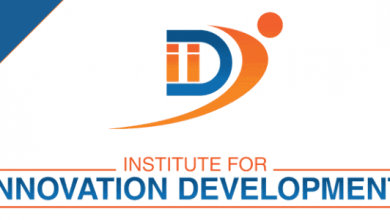Your Duolingo Benefits & Career: Financial Planning for Employees and Executives

To make Wealthtender free for readers, we earn money from advertisers, including financial professionals and firms that pay to be featured. This creates a conflict of interest when we favor their promotion over others. Read our editorial policy and terms of service to learn more. Wealthtender is not a client of these financial services providers.
➡️ Find a Local Advisor | 🎯 Find a Specialist Advisor

Do you work at Duolingo? Get the resources you need and expert insights from financial professionals who specialize in helping Duolingo employees make the most of their compensation package and benefits.
Whether you’re a new Duolingo employee or you’ve moved up the ranks into a management or executive leadership role over a multi-year career, it’s important to make smart money moves with your income and employee benefits. For example:
✅ Do you know the right moves to make to get the greatest value from the Duolingo benefits available to you?
✅If you’re thinking about leaving Duolingo for another job or planning to retire from the company in a few years, are you taking the right steps today to ensure you will receive all of the compensation and benefits that you’ve earned?
Get the Most Value from Your Duolingo Benefits and Compensation Package
Throughout the year, Duolingo provides its employees and executives with updates about their benefits ranging from health insurance and health savings plans to retirement plans like a 401(k), deferred compensation plans, and stock options. While the company offers many useful resources and access to knowledgeable staff who can assist with questions, you’ll also find financial professionals not affiliated with Duolingo who specialize in helping Duolingo employees make the most of their income and benefits.
Whether you work in the Duolingo headquarters in Pittsburgh, Pennsylvania, another office location around the country, or remotely from home, you may have questions about your compensation package and benefits better suited for a financial professional who can offer unbiased advice and guidance.
For example, sensitive topics like discussing the steps you should take before quitting your job at Duolingo to work elsewhere, protecting yourself in advance of a corporate layoff, or deciding when you should plan to retire are all conversations that may be more comfortable with a trusted financial advisor.
Should you hire a Duolingo specialist financial advisor or an advisor close to home?
You’ll likely find dozens of nearby financial advisors well-suited to help you reach your money goals with a personalized plan. But it may be more difficult to find a financial advisor who specializes in serving Duolingo employees.
Fortunately, many financial advisors offer virtual services so you can meet online no matter where you (or they) live.
This means you can choose to hire a specialist financial advisor who lives hundreds of miles away if you decide their knowledge and experience working with Duolingo employees is a better fit to help with your unique needs.
💡 In the Q&A below, you’ll gain insights from financial advisors who work with Duolingo employees to help them make smart decisions to get the most value from their compensation and benefits, reduce their money stress, and prepare for a comfortable retirement.
🙋♀️ Do you have questions not yet answered? Use the form below to submit questions anonymously and watch this article for updates with answers to your questions. You can also reach out to the financial advisors below to set up an introductory call or contact them with your questions by email.
💸 Smart Money Insights for Duolingo Employees & Executives
This page is organized into sections to help you quickly find the information you need and get answers to your questions:
- Q&A: Financial Planning Tips for Duolingo Employees & Executives
- Get Answers to Your Questions About Your Duolingo Benefits and Career
- Browse Related Articles
Q&A: Financial Planning Tips for Duolingo Employees & Executives
Answers to Employee Questions with Ryan Goldenhar, CFA®, CFP®
Ryan Goldenhar is a financial advisor based in San Diego, California who specializes in offering financial planning services to Duolingo employees. Ryan helps his clients get the most value from their Duolingo benefits and compensation package so they can enjoy life and feel confident about their financial future.
Q: As a financial advisor with experience helping Duolingo employees save for their retirement, how do you help them make the most of their employee benefits?
Ryan: Duolingo has some great benefits and we make sure that you are taking advantage of all that they offer. This includes helping you with your equity compensation (ISOs, NSOs, RSUs, ESPP), retirement accounts, health insurance and family benefits within their overall corporate benefits package.
Q: When you first speak with a Duolingo employee, what questions do you like to ask to better understand their unique circumstances and determine how you can best help them achieve their goals?
Ryan: Duolingo is a publicly traded company which means you either need to sell during open windows or a 10b5-1 selling plan with Shareworks/Morgan Stanley. We help you to strategize around the best way to diversify with the lowest possible taxes based on your unique situation and goals.
This leads to questions such as:
- Do you have an idea of how much in taxes you will owe with your total compensation package?
- What are your goals in life?
- How long do you hope to stay with Duolingo?
- How would you like your wealth to support your family and legacy?
- How well do you feel you understand your equity compensation?
Q: Is there a particular benefit available to Duolingo employees you feel isn’t as well utilized or understood by employees as it should be?
Ryan: Incentive Stock Options (ISOs) are still occasionally issued by Duolingo and if you have them, they can be confusing since they do have tax benefits but you have to be careful around generating Alternative Minimum Tax (AMT) if you exercise-and-hold shares via an ISO exercise. We help clients navigate this issue with a structured plan of potentially exercising them early in a calendar year and then revisiting the buy-and-hold decision during the last trading window of the calendar year before AMT might become due on the phantom benefit value from exercising the following April. If the decision to buy-and-hold Duolingo shares from an ISO exercise no longer makes economic sense during the last trading window of the year, we help clients explore what’s called a “disqualifying disposition” which works like a “mulligan” in golf…it’s a do over.
Also, as of 2025 when this is written, they have really unique benefits like $10,000 towards a first home purchase…if it’s in Pittsburgh! Another unique benefit, if you’ve been with Duolingo for over 10 years, you qualify for a two month paid sabbatical! Wow!
Q: Beyond Duolingo employee benefits for retirement savings, are there other types of benefits offered by the company that you find valuable to discuss with your clients?
Ryan: Duolingo has a number of nice perks as part of their employee benefits like Health Savings Accounts (HSAs) and Dependent Care flexible spending accounts (FSAs) to use pre-tax dollars for these expenses. There’s also a lifetime $30,000 fertility benefit for those looking to have children via IVF. Also, free therapy sessions were increased from 8 to 10 sessions in 2025.
Each year, around open enrollment, we review our clients’ corporate benefits for the coming year to see if there are some new benefits to explore that might help pay for estate planning, tax return preparation, insurance (property & casualty term life, etc.), professional education, debt management, etc. We also review any new job offers as they explore potentially moving to another employer.
Q: For Duolingo employees thinking about leaving the company to accept a job elsewhere, what actions do you recommend they take before resigning and shortly thereafter?
Ryan: If you’re thinking of leaving Duolingo, you should consider the financial impact of losing your UNVESTED equity which will be forfeited when you leave. In addition, you may have a short window to exercise and remaining vested options when you leave and need to factor this economic decision into all of the other financial choices that come with leaving Duolingo to join a new company.
Another consideration is health insurance. Health insurance will end at month-end of your employment. Knowing you have another job starting in a few weeks vs. a few days may leave you open to a medical emergency if coverage is not continuous.
Finally, 401(k) employee contributions and HSA contributions are a zero sum game across employers. If you contribute the maximum to the Duolingo 401(k) and then move to a new employer, you might need to wait until the next year to start contributing to the new 401(k) to make sure you don’t overcontribute to a 401(k) plan for the calendar year and then need to fix it later to avoid a tax penalty.
Q: For Duolingo employees approaching retirement age, how do you recommend they prepare to make the transition from living off their salary to relying upon other sources of income?
Ryan: Many of our tech professional clients look to make work optional around age 50 to age 55. Because they’re not 59 1/2 yet which would allow them to pull funds penalty free from an IRA or 401(k), we need to assess the level of outside retirement account assets to support the client’s lifestyle and to budget potentially higher costs for medical insurance until they reach age 65 to qualify for lower cost Medicare coverage.
We work with our clients to understand COBRA and health exchange options years in advance, so we have a good year of emergency savings ready for the first big moment of this next phase in life. Then, it’s really about seeing how you can lean into your values and passions while keeping the finances in mind. Some of our clients go on to create their own startups or decide on consulting or volunteer work, etc.
For our clients, we’ve discovered that a traditional ‘retirement’ to lounge by the pool with a Mai Tai isn’t of interest. They want “financial freedom” to explore new and different life adventures that may require cash needs to get going. We make sure we understand what will be going out the door by helping our clients imagine what their new lives will look like. Then we work to structure their portfolio cash flow so they can see how they are doing spending-wise compared to what we planned for.
Q: For Duolingo employees who have managed their finances on their own to this point, what would you suggest they consider to help them decide if they should begin working with a financial advisor at this stage in their lives?
Ryan: An advisor can help with short-term decision-making such as equity compensation decisions, tax planning guidance, etc. and also with bigger-picture thinking (i.e. creating a framework so you can see the direction all your hard work is taking you, and make sure your money behaviors are aligning with your life goals). Our clients are often already doing many of the right things, moving in a positive direction and the value of working with us as their advisor/coach is to serve as an execution and accountability partner for them to allow them to achieve more than they can do on their own.
Our planning process helps to put things in a broader framework to allow our clients to confidently make decisions that are proactive and intentional while we serve as a sounding board for the client about ideas they’re not sure about.
We encourage DIY investors to consider the cost of NOT getting a second opinion. Investment management is one thing, but retirement planning has incredible nuance to it that many people overlook such as:
- How will my investments be taxed? Can I minimize my lifetime taxation? Am I taking too much (or not enough) risk in the markets?
- What is my plan to turn my assets into income? What are the tax implications of doing that?
- Am I going to run out of money? How should I deal with Inflation?
- What about long-term care?
- Are my beneficiary designations up to date? Do I understand what’s going to happen to my assets when I pass?
- Do I need life insurance? Do I have enough or too much? Should I keep these old policies?
There are a number of different areas that a Certified Financial Planner (CFP) can provide incredible value to a recent retiree, even if they choose to continue to manage their own investments.
Q: What are some of the unique financial planning challenges you commonly see among your clients who are Duolingo employees and how do you help them overcome these obstacles?
Ryan: A good, high-paying job in tech can feel a bit like golden handcuffs sometimes and it can be hard to imagine walking away. But, if you want to prepare for an exit or a shift to a different industry, we can create a pathway to ease the transition. In a role with equity compensation, a challenge can be to define how much to rely on that compensation in the plan. It’s variable and can be hard to quantify, but can be significant. So, having a firm structure based on a client’s comfort with the exposure and how it’s treated in the plan is important.
Q: What questions do you recommend Duolingo employees ask financial advisors they’re considering hiring to help them decide if they’re a good fit?
Ryan: How does the advisor think about and approach decisions to complicated financial choices?
We’ve found that sometimes the best choice for a particular client isn’t the one with the highest possible economic value because “sleep at night” and emotional factors might be more important than the biggest number on a spreadsheet. Your advisor should be able to clearly articulate how they arrived at their recommendations in a way that you can understand in plain English with no salesy finance gibberish.
They should also understand that trust must be earned over time and isn’t going to be granted immediately.
Beyond these philosophical points, you should ask if the advisor is a fiduciary legally required to put your economic interests before his or her own? Will the advisor be providing comprehensive financial planning or just investment management? What will you pay in fees? Are there any hidden fees in the products the advisor is recommending?
Q: Is there anything that comes up frequently in your initial meeting with Duolingo employees that surprises you?
Ryan: I suppose it’s how many years they’ve already worked for Duolingo. It seems like tech companies are constantly pivoting and their workforce is either growing or shrinking quickly as a result. At Duolingo, it seems most of the employees we encounter there have been there for quite some time and have benefited financially from annual equity refreshes to help grow their wealth.
Q: For highly compensated Duolingo employees and executives, are there any special benefits you believe it’s important to take into consideration when preparing their financial plan?
Ryan: For highly compensated employees at Duolingo or any company for that matter, we encourage them to look at and explore the potential benefits of a deferred compensation plan if they get invited to participate in the following calendar year. It’s a good tool to defer income taxes but comes with some tradeoffs that we help our clients explore before participating.
Q: Is there a particularly memorable experience or a moment you recall with a client who worked at Duolingo when you realized they have unique opportunities and circumstances when it comes to their financial planning needs?
Ryan: Duolingo’s $600 towards learning & development is a great benefit to pay for specialized professional development via books, publications (i.e. magazines and newspapers), seminars, educational courses, etc. via a fairly easy process of reimbursement. It’s not a large amount of money within the context of a client’s overall financial plan but the education gained might lead to some nice growth in the value of a client’s “human capital.”
Get to Know Ryan Goldenhar Financial Advisor for Duolingo Employees:
View Ryan’s profile page on Wealthtender or visit his website to learn more.
Are you a financial advisor who specializes in working with employees at Duolingo or another large company?
✅ Join Wealthtender and get featured as a specialist financial advisor based on your knowledge and experience working with employees at Duolingo or another large company. (Subject to availability and terms.)
✅ Sign up today and join financial advisors attracting their ideal clients on Wealthtender
✅ Or request more information by email:
🙋♀️ Have Questions About Your Duolingo Benefits or Career?
📰 Browse Related Articles
Are you ready to enjoy life more with less money stress?
Sign up to receive weekly insights from Wealthtender with useful money tips and fresh ideas to help you achieve your financial goals.
About the Author

Brian Thorp
Founder and CEO, Wealthtender
Brian and his wife live in Texas, enjoying the diversity of Houston and the vibrancy of Austin.
With over 25 years in the financial services industry, Brian is applying his experience and passion at Wealthtender to help more people enjoy life with less money stress.




